Introduction
Electronic skin sensors, also known as the wearable thin film sensors, can be directly placed on the human body to measure body parameters such as body temperature, heartbeat, sweat composition etc. Advances in materials science and electronics have enabled the development of electronic skin sensors which offer high resolution and fast response time while being flexible and stretchable. Electronic skin sensors have applications in many areas such as healthcare, sports, robotics and prosthetics, etc.
Sensors and transmitters are integrated into flexible and stretchable films, patches, bandages or tattoos which collect the data and feed them into machine-learning algorithms for monitoring vital parameters, patient abnormalities and also for tracking treatments. The doctors can monitor the efficacy of drugs as well as their patient’s safety and speed of recovery and from a remote location. This makes health care predictable, safe and efficient.

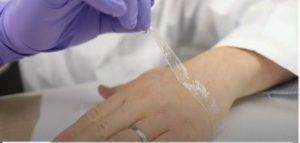
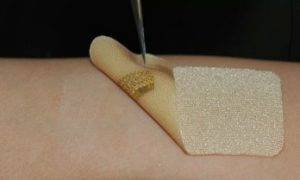
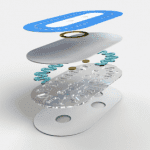
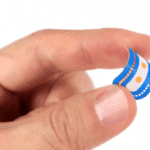


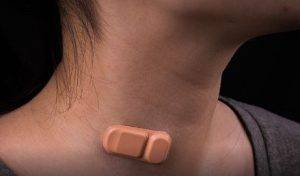
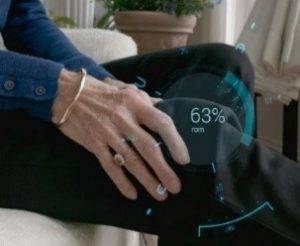
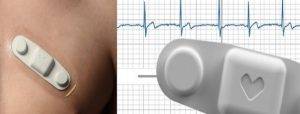



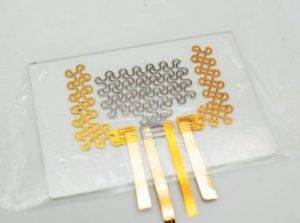
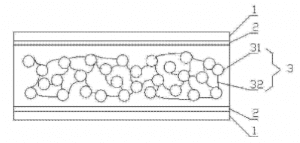 method, comprising of multiple pressure sensing units, each composed of two flexible and retractable ultra-thin PDMS films attached to the two ultra-thin PDMS films. It consists of two electrodes in between, and a composite pressure sensing film disposed between the two electrodes. The composite pressure sensing membrane is composed of several polyaniline hollow nanospheres and multiple polyaniline hollow nanospheres. The properties of the flexible electronic skin sensor can be used to monitor human signals such as checking for respiratory diseases, and performing speech recognition.
method, comprising of multiple pressure sensing units, each composed of two flexible and retractable ultra-thin PDMS films attached to the two ultra-thin PDMS films. It consists of two electrodes in between, and a composite pressure sensing film disposed between the two electrodes. The composite pressure sensing membrane is composed of several polyaniline hollow nanospheres and multiple polyaniline hollow nanospheres. The properties of the flexible electronic skin sensor can be used to monitor human signals such as checking for respiratory diseases, and performing speech recognition. to skin, and a preparation method thereof. The invention relates to a nano-scale counter electrode and a working electrode pattern on an ultra-thin flexible insulating support layer and an adhesive layer, forming a Prussian blue film on the pattern of the working electrode. This forms a glucose oxidase-immobilized on the Prussian blue film. Chitosan film is affixed to the skin surface. Glucose generates hydrogen peroxide under the action of glucose oxidase. The sensor has the characteristics of ultra-thin and flexible, and can be attached to any position on the surface of human skin, without affecting the movement of the human body and normal life, non-invasively and accurately measuring the concentration of glucose existing on the surface of the skin to manage diabetes.
to skin, and a preparation method thereof. The invention relates to a nano-scale counter electrode and a working electrode pattern on an ultra-thin flexible insulating support layer and an adhesive layer, forming a Prussian blue film on the pattern of the working electrode. This forms a glucose oxidase-immobilized on the Prussian blue film. Chitosan film is affixed to the skin surface. Glucose generates hydrogen peroxide under the action of glucose oxidase. The sensor has the characteristics of ultra-thin and flexible, and can be attached to any position on the surface of human skin, without affecting the movement of the human body and normal life, non-invasively and accurately measuring the concentration of glucose existing on the surface of the skin to manage diabetes.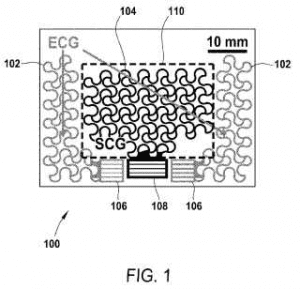 when worn on a human chest, is capable of synchronously monitoring electrical activity and mechano-acoustic activity of a cardiovascular system. The dual-mode epidermal sensor/electrode consists of a pair of stretchable electrocardiogram (ECG) electrodes made out of filamentary serpentine gold nano-membranes and a stretchable seismocardiogram (SCG) sensor comprising a filamentary serpentine PVDF. The dual-mode epidermal sensor/electrode is light, thin, flexible, and requires no operational power. The sensor can be laminated conformably and unobtrusively on a human chest to provide high fidelity ECG measurements and SCG measurements, and an estimated beat-to-beat blood pressure (BP).
when worn on a human chest, is capable of synchronously monitoring electrical activity and mechano-acoustic activity of a cardiovascular system. The dual-mode epidermal sensor/electrode consists of a pair of stretchable electrocardiogram (ECG) electrodes made out of filamentary serpentine gold nano-membranes and a stretchable seismocardiogram (SCG) sensor comprising a filamentary serpentine PVDF. The dual-mode epidermal sensor/electrode is light, thin, flexible, and requires no operational power. The sensor can be laminated conformably and unobtrusively on a human chest to provide high fidelity ECG measurements and SCG measurements, and an estimated beat-to-beat blood pressure (BP).